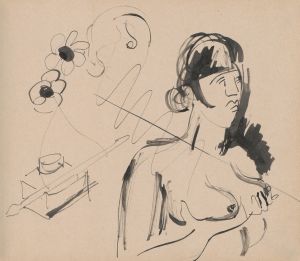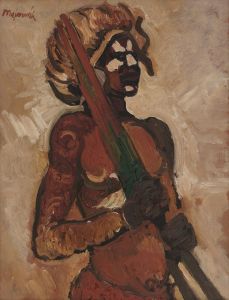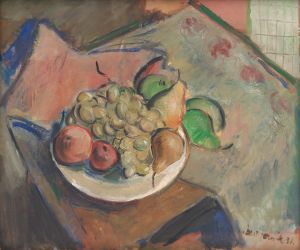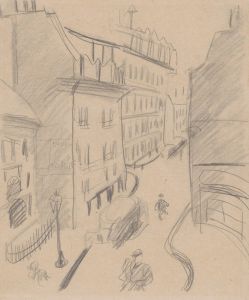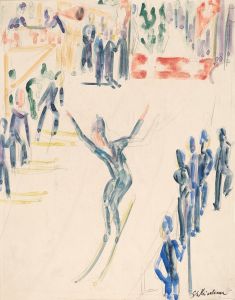
Skicár
A hand-painted replica of Cyprián Majerník’s masterpiece Skicár, meticulously crafted by professional artists to capture the true essence of the original. Each piece is created with museum-quality canvas and rare mineral pigments, carefully painted by experienced artists with delicate brushstrokes and rich, layered colors to perfectly recreate the texture of the original artwork. Unlike machine-printed reproductions, this hand-painted version brings the painting to life, infused with the artist’s emotions and skill in every stroke. Whether for personal collection or home decoration, it instantly elevates the artistic atmosphere of any space.
Cyprián Majerník was a Slovak painter known for his poignant and expressive works, often reflecting the socio-political turmoil of his time. Born in 1909 in Veľké Kostoľany, Slovakia, Majerník became a significant figure in Central European art during the early to mid-20th century. He studied at the Academy of Fine Arts in Prague, where he was influenced by the prevailing artistic movements and the political climate of the interwar period.
One of Majerník's notable works is "Skicár," which translates to "Sketchbook" in English. This piece is emblematic of Majerník's style, which often incorporated elements of expressionism and symbolism. His works frequently depicted themes of human suffering, existential anxiety, and the absurdity of war, reflecting the broader context of Europe during the 1930s and 1940s.
Majerník's art was deeply influenced by the events leading up to and during World War II. The rise of fascism and the subsequent occupation of Czechoslovakia had a profound impact on his work. His paintings from this period often convey a sense of despair and critique of the political situation. "Skicár," like many of his other works, can be seen as a response to these turbulent times, capturing the emotional and psychological landscape of a continent on the brink of collapse.
Majerník's technique in "Skicár" and other works is characterized by bold brushstrokes and a vivid color palette, which he used to evoke intense emotions. His figures are often distorted, reflecting the influence of expressionism and his desire to portray the inner turmoil of his subjects. This approach allowed him to communicate complex themes of alienation and resilience in the face of adversity.
Despite the bleak subject matter, Majerník's work also contains elements of hope and resistance. His art often suggests a belief in the enduring human spirit, even amidst chaos and destruction. This duality is a hallmark of his oeuvre, making his work both challenging and deeply moving.
Majerník's contribution to art was recognized during his lifetime, although his career was tragically cut short. He suffered from multiple sclerosis, which increasingly affected his ability to paint. Despite his illness, he continued to work until his death in 1945. Today, Majerník is remembered as one of Slovakia's most important modern artists, and his works, including "Skicár," continue to be studied and appreciated for their emotional depth and historical significance.
His legacy is preserved in various collections, including the Slovak National Gallery, which houses many of his works. Majerník's art remains a powerful testament to the human condition, capturing the complexities of a world in turmoil and the enduring strength of the human spirit.






